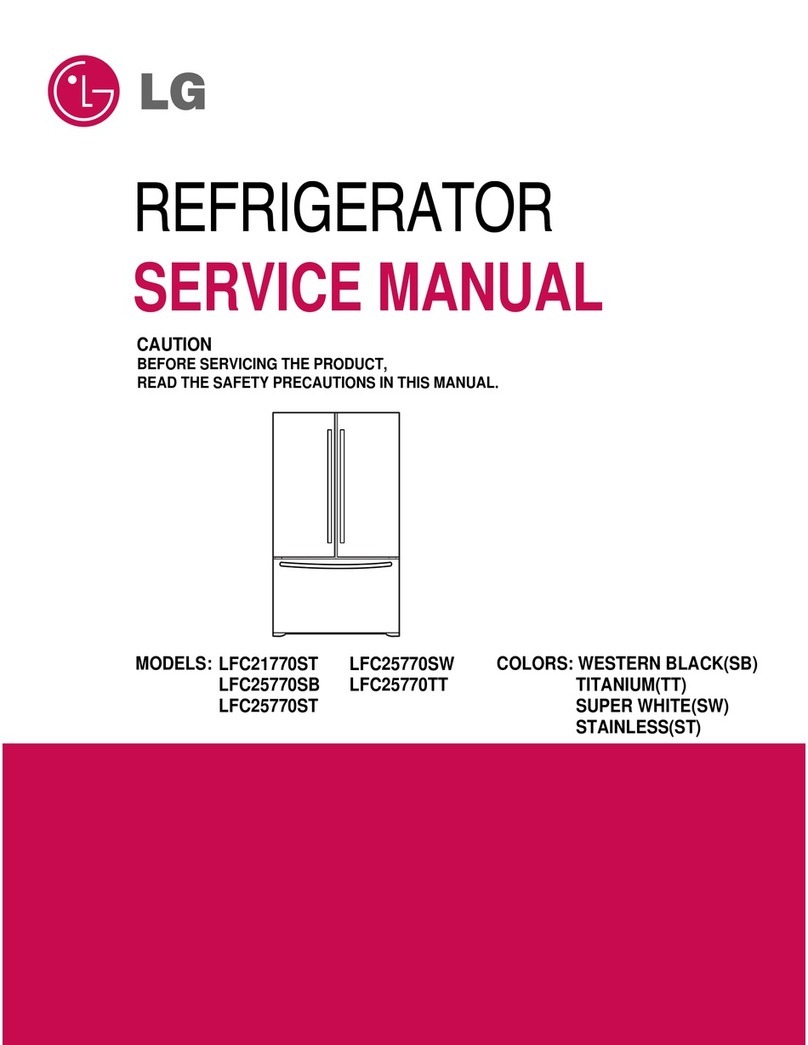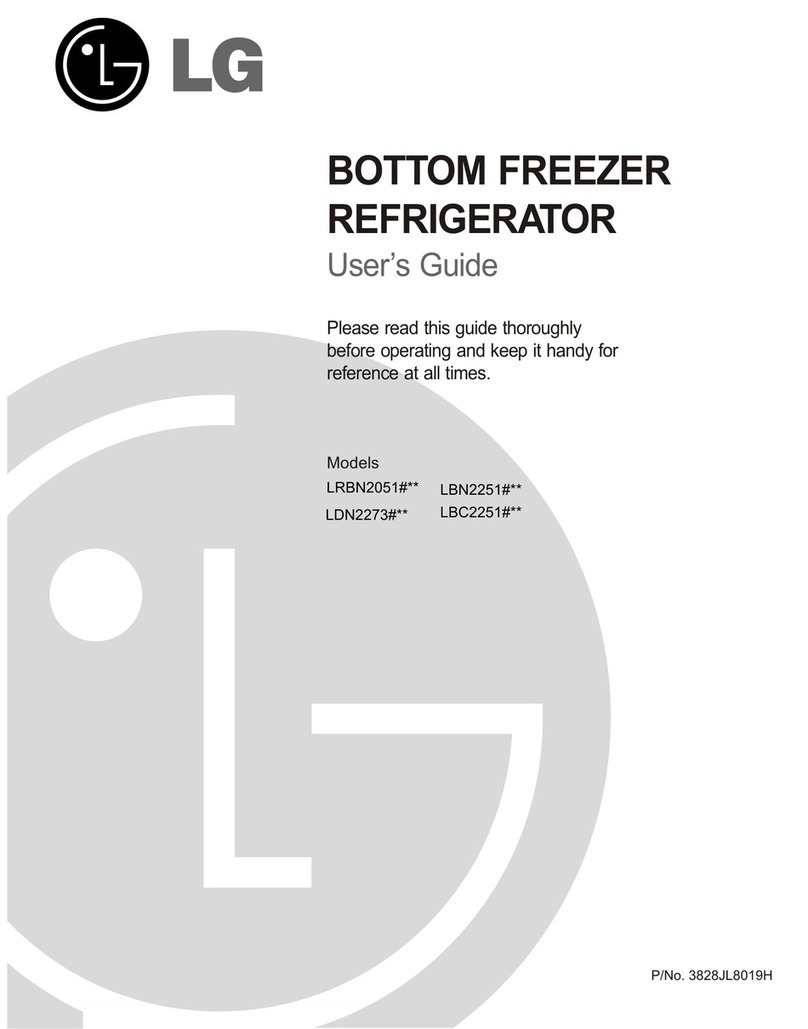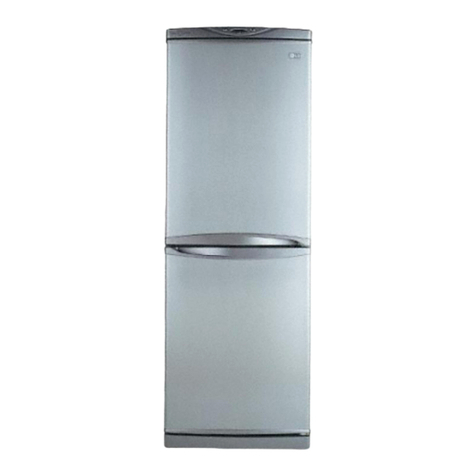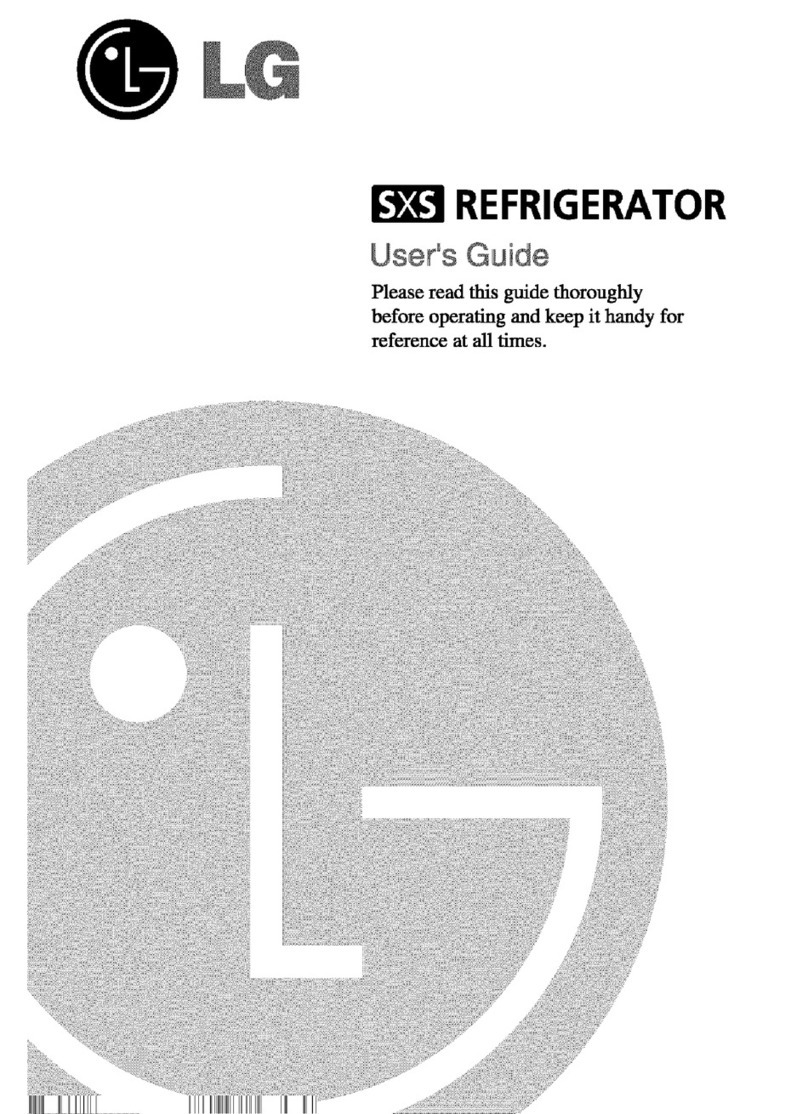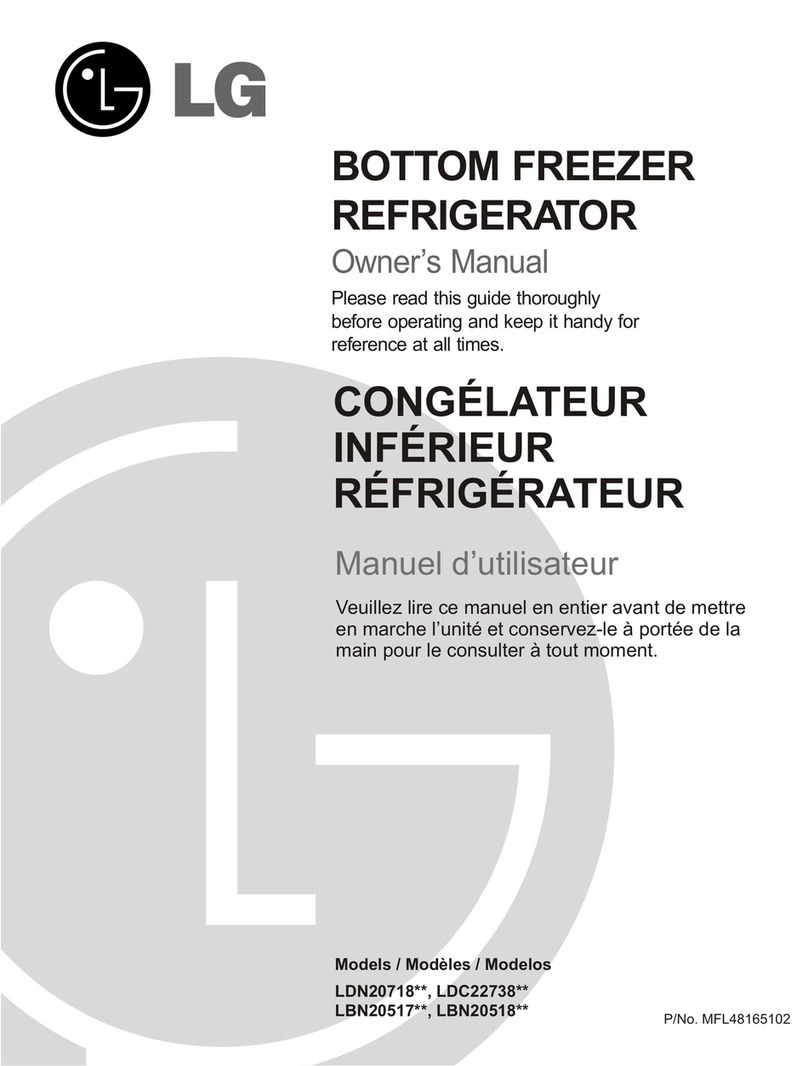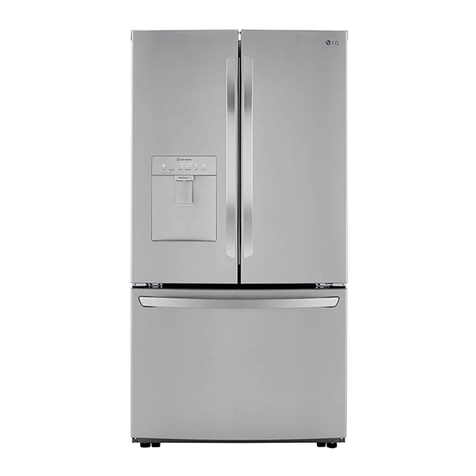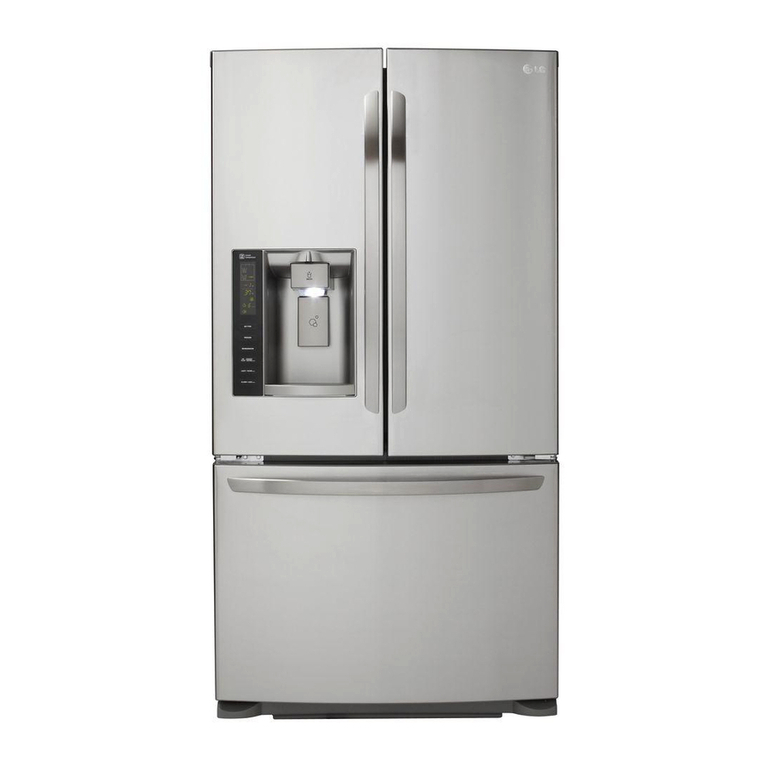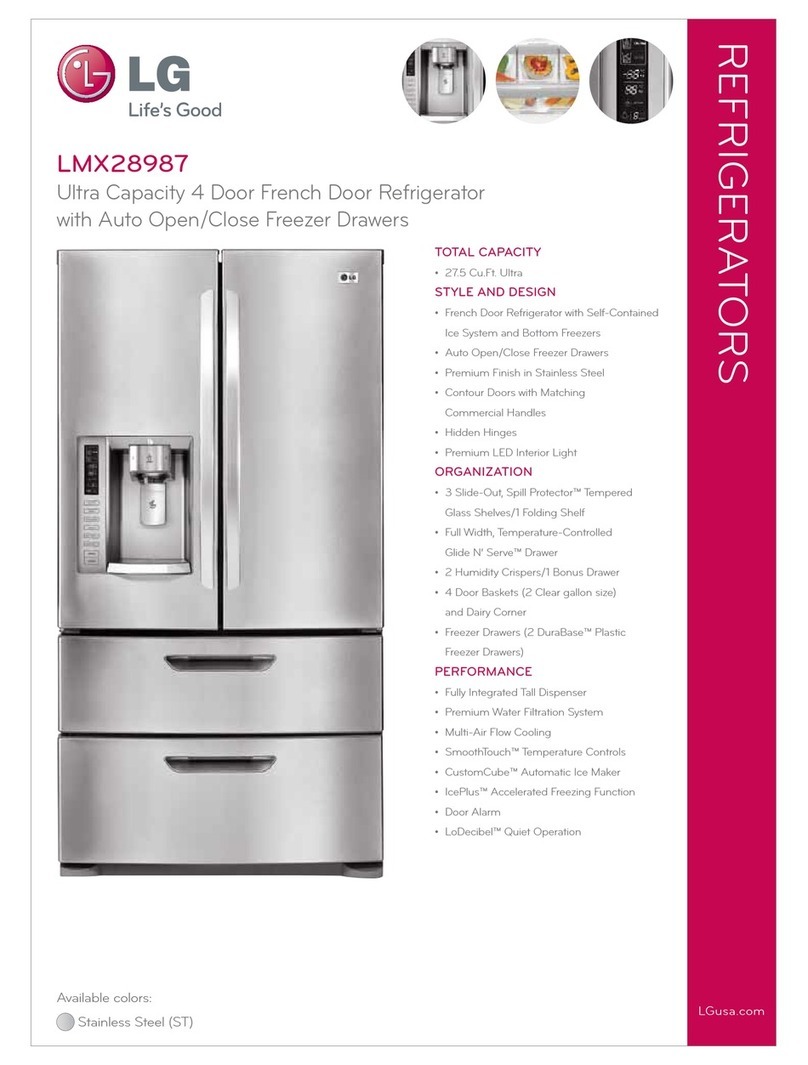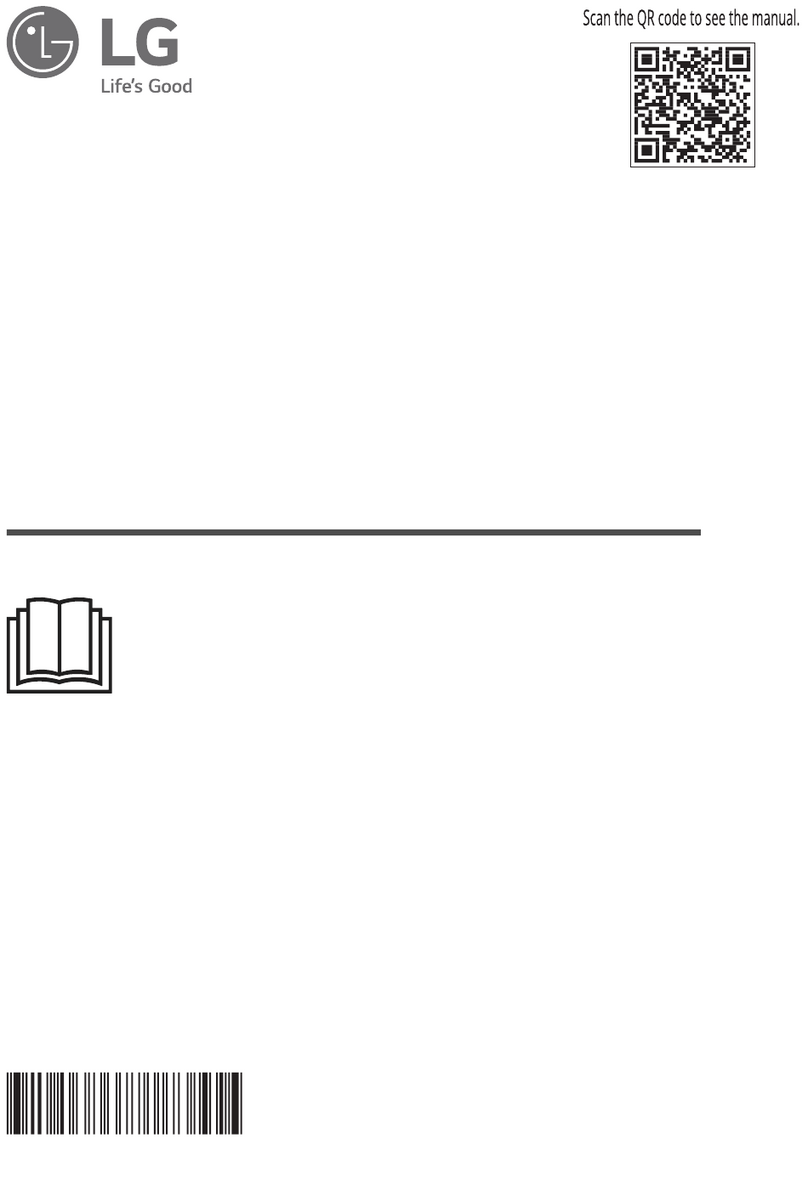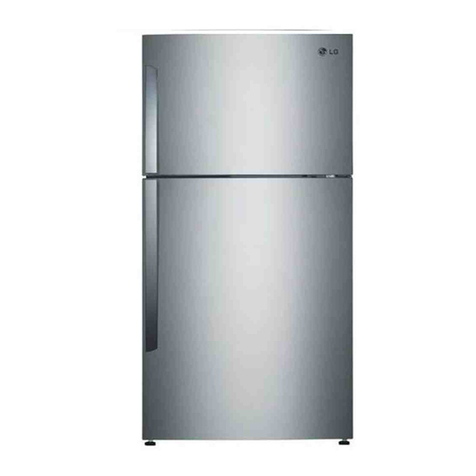Features of refrigerant (R600a)
• Achromatic and odor less gas.
• Flammable gas and the ignition (explosion) at 494°C.
• Upper/lower explosion limit: 1.8%~8.4%/Vol.
Features of the R600a refrigerator
•
Charging of 60% refrigerant compared with a R134a model
•
The suction pressure is below 1bar (abs) during the operation.
• Because of its low suction pressure, the external air may
flow in the cycle system when the refrigerant leak, and it
causes malfunction in the compressor.
• The displacement of compressor using R600a must be at
least 1.7 times larger than that of R134a.
• Any type of dryer is applicable (XH-5, 7, 9).
• The EVAPORATOR or any other cycle part that has
welding joint is hidden in the foam. (If not hidden inside,
the whole electric parts must be tested with the
LEAKAGE TEST according to the IEC Standard.)
• The compressor has label of the refrigerant R600a.
• Only the SVC man must have an access to the system.
Installation place
• Must be well ventilated.
• Must be 20 m3or larger.
• Must be no-smoking area.
• No ignitable factors must be present.
Utilities
• Refrigerant cylinder (MAX NET 300g)
• Manometer
• Vacuum pump (600
L
/min)
• Piercing Clamp
• Quick coupler
• Hoses (5m-1EA, 1m-3EA)
• LOKRING
• Portable Leakage detector (3g/year↓)
• Nitrogen cylinder (for leakage test)
• Concentration gauge
Make sure before Servicing
• Refrigerant
Confirm the refrigerant by checking Name Plate and the label
on the compressor, after opening the COVER ASSY,
BACK-M/C.
• If the refrigerant is R600a, you must not weld or apply a
heat source.
Air Recharging in Compressor
Before refilling the refrigerant, you must perform the test according
to Chapter 5 (TROUBLESHOOTING CHART). When the defects
are found, you must discharge the residual refrigerant (R600a) in
the outdoor. For discharging the refrigerant R600a, break the
narrow portion of tube extension by hand or with a pipe cutter as
shown in Figure 1. Leave it for 30min in outside to stabilize the
pressure with ambient. Then, check the pressure by piercing the
dryer part with piercing pliers. If the refrigerant is not completely
discharged, let the refrigerator alone for more 30min in outside.
Attach the service tube installed with a Schrader valve (one-way
valve) by using the LOKRING (Figure 2). Then, connect the
Schrader valve (one-way valve) to the pump that is connected to
the discharging hose leading to the outside. When discharging the
residual refrigerant, repeat 3 cycle that includes 3min of the pump
running->pump off->30sec of the compressor running.
After the refrigerant (R600a) is completely discharged, repair any
defective parts and replace the dryer. At any case you must use the
LOKRING for connecting or replacing any part in the cycle (No Fire,
No Welding). Connect the Schrader valve to pump with the coupler.
And then turn the pump on for vacuum state (Figure 3). Let the
pump run until the low-pressure gauge indicates the vacuum (gauge
pressure 0, absolute pressure -1atm or -760mmHg). Recommended
vacuum time is 30 min. Charge the N2gas in order to check for
leakage from welding points and the LOKRING. If leakages are
found, repair the defects and repeat the vacuum process.
After the system is completely vacuumed, fill it with the refrigerant
R600a up to what has been specified at your refrigerator Name
Plate. The amount of refrigerant (R600a) must be precisely
measured within the error of ±2g by an electron scale (Figure 4).
If you use the manifold connected with both the refrigerant
(R600a) cylinder and the vacuum pump simultaneously,
make sure the pump valve is closed (Figure 5).
Connect the charging hose (that is connected to the refrigerant
(R600a) cylinder) to the Schrader valve installed on the service
tube. Then, charge the refrigerant (R600a) by controlling the
Throttle valve. When you do so, do not fully open the Throttle valve
because it may make damage to the compressor. Gradually charge
the refrigerant (R600a) by changing open and close the Throttle
Valve (5g at each time). The charging hose must use a one-way
valve to prevent the refrigerant refluence. Close the Schrader valve
cap after the refrigerant (R600a) is completely recharged.
After you completely recharge the refrigerant (R600a), perform the
leakage test by using a portable leakage detector or soapy water.
Test the low pressure (suction) parts in compressor off time and
high pressure parts in compressor on time. If the leakages are
found, restart from the refrigerant (R600a) discharging process and
repairs defects of leaks.
After the leakage test, check the temperature of each parts of the
cycle. Check with hands if the CONDENSER and the case (HOT-
LINE pipe) that is contacted to the door gasket are warm. Confirm
that frost is uniform distributed on the surface of the
EVAPORATOR.

